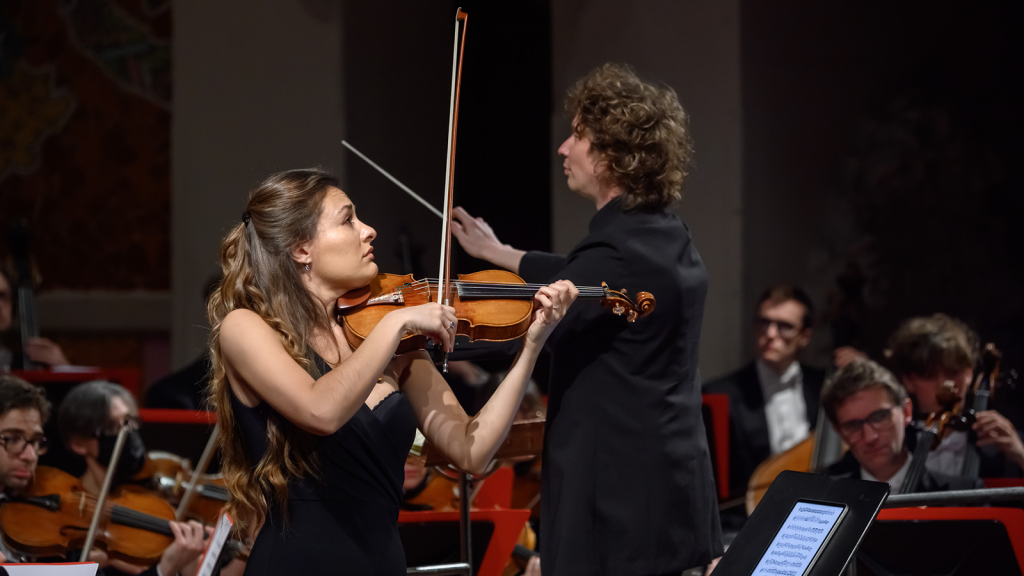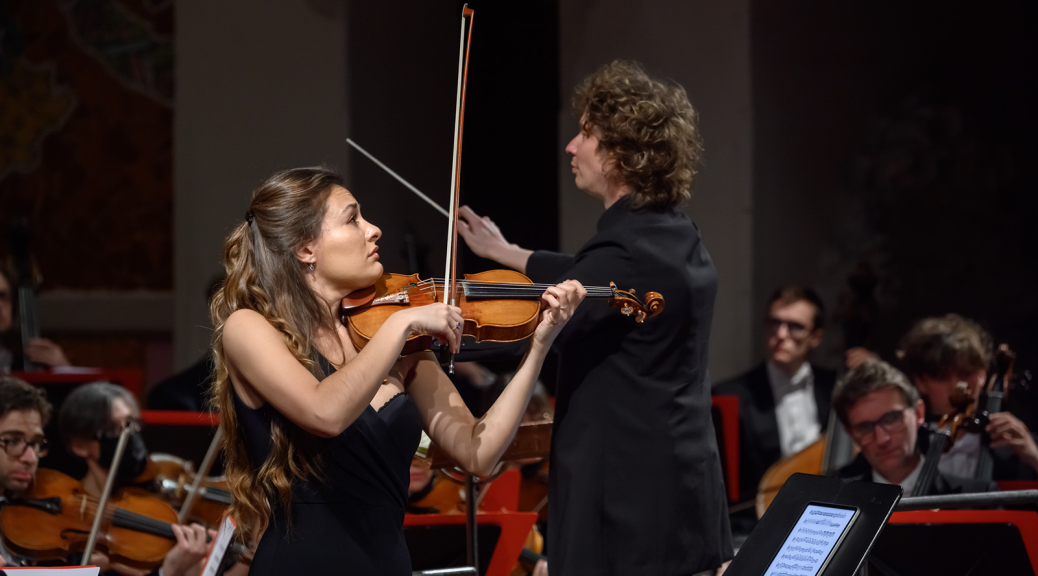
 (3 / 5)
(3 / 5)
The Let Freedom Ring season with the Philharmonia has seen a wide burst of music from the United States. The question still prevails: what is the American sound? What is the American sound today?
The discovery of this night goes to the opening slot from Wynton Marsalis and his Violin Concerto. Born in 1961, Marsalis offered up this piece in 2015 and it establishes a lot of the American sound that he personally knows and loves. It was quite lovely, the use of jazz, blues and country music breaks down barriers like prevoius composers before him. A solid 40 minutes, it never dragged, its merriment often pulling you into its delightful world. I could not resist the fun with some head nodding of my own. Rampant rhythm changes and a rich, orchestral pallete stoodout as highlights. Nicola Benedetti was the guiding spirit of the work, really tucking into the eccentric aspects and delighting in novel musical genres that phased through. Nicola’ passage from centre stage to the side, saw a telling duet with Matt French on drum kit, one of many thrills. Listen to this on BBC Sounds, you might just be surprised.
Leading into more light music with Duke Ellington and his Three Black Kings. This puntasic tribute to The Maji, Solomon and Martin Luther King, is pleasent enough. This large orchestra feeling on the heavy side for what I dare say passes as elevator music. Its was pretty and had some clever melodies yet I wasn’t wowed by it at all. I found more to get out of Gershwin’s Porgy and Bess: A Symphonic Picture, though that took a while to take off. I guess you wait for the famous songs out of this flawed and problematic opera. Though when Summertime, I Got Plenty O’ Nuttin’ and It Ain’t Necessarily So arrive, it does pay off. The Storm scene with additional bell sounds is evokative and quite scary. Here the orchestra let loose once more and thrill in these finely written songs in orchestral form. This remains the best way to listen to Porgy and Bess, as the full opera is pretty dull.
Listen to this concert on BBC Sounds now.


The first five or six minutes of the “Symphonic Picture” is the calm, atmospheric orchestral stuff and the choral “Clara, Clara”—some people seem to wish it would start off with a bang and be nothing but a song-hits medley, like a Broadway overture. At least your conductor played the whole thing! Far too many lop off that whole first quarter of the “Picture” and start with the flashy xylophone music that’s heard at the opera’s beginning (and don’t even tell their audience), sad to say.